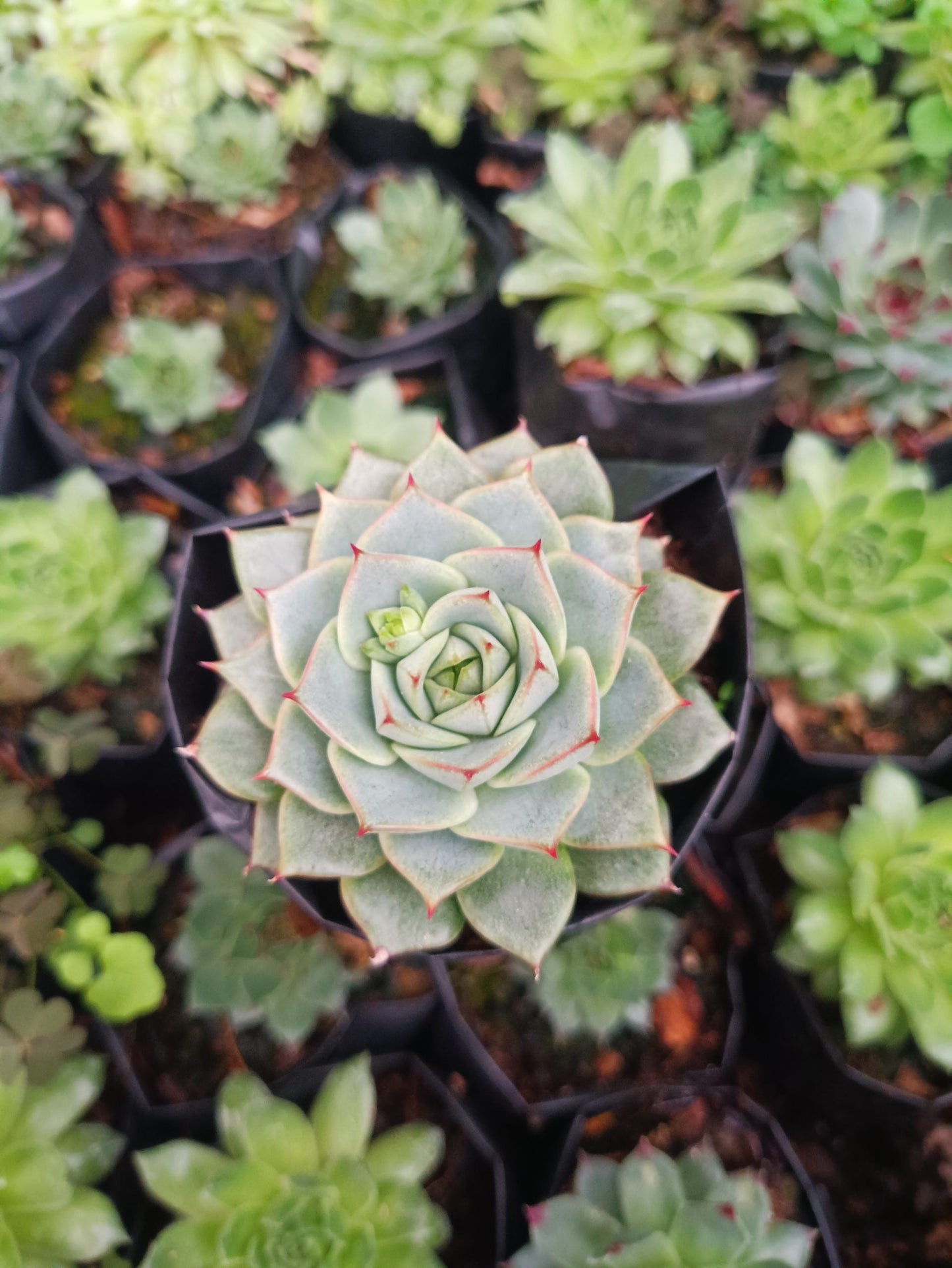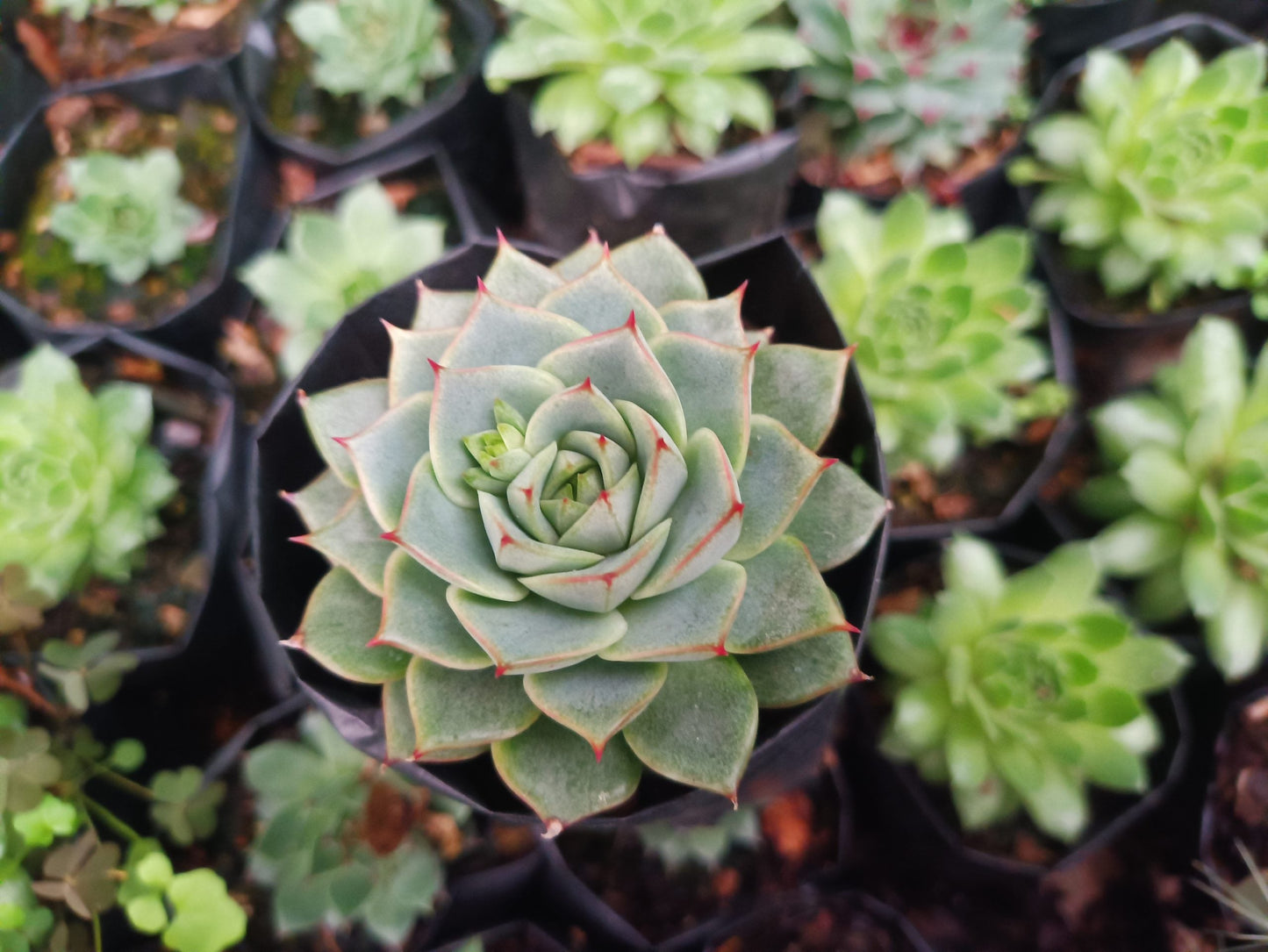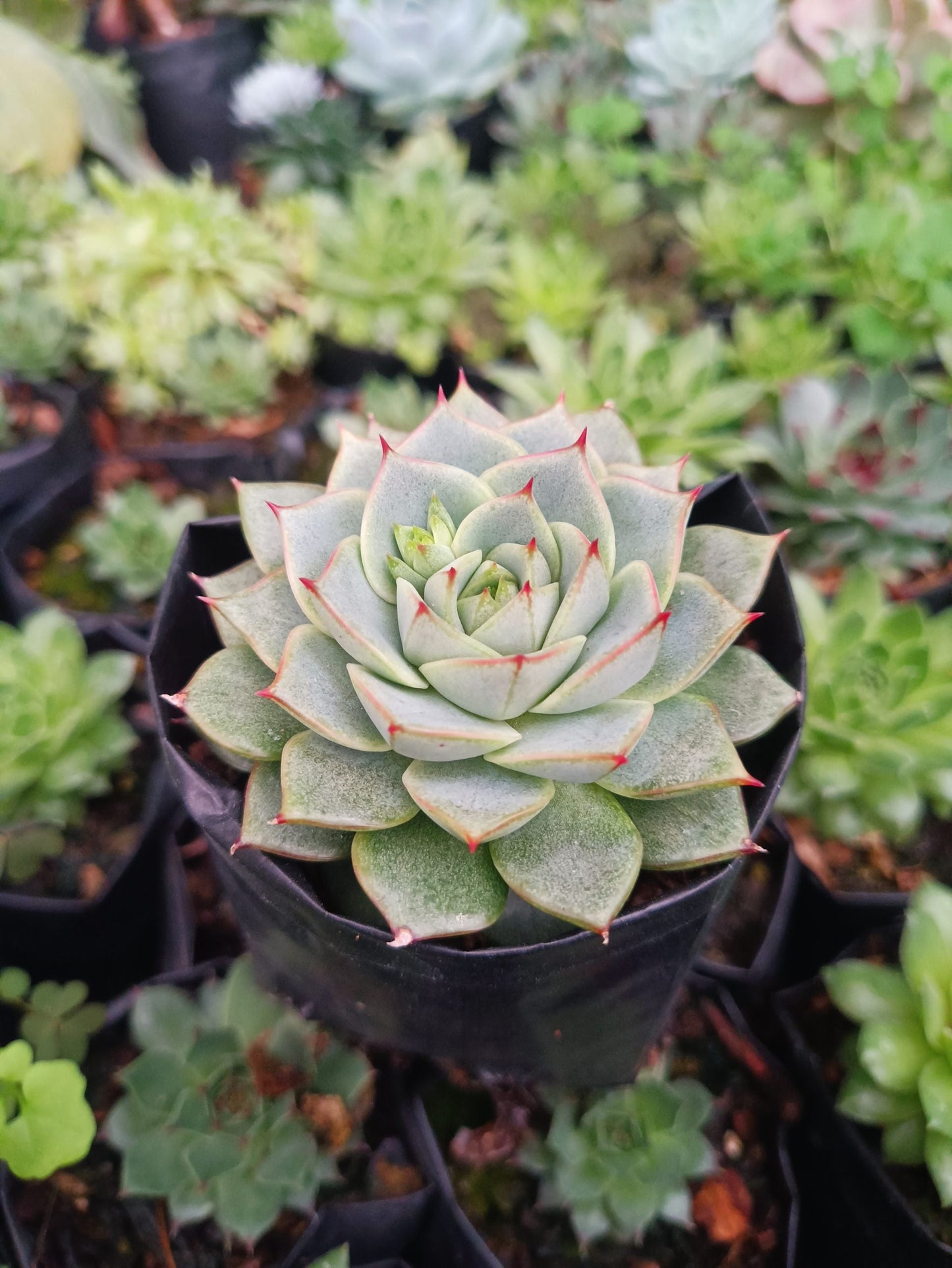1
/
of
3
Echeveria Fabiola Bare-Rooted Succulent - Bring Beauty Home!
Echeveria Fabiola Bare-Rooted Succulent - Bring Beauty Home!
Regular price
₹ 199
Regular price
₹ 198
Sale price
₹ 199
Unit price
/
per
Shipping calculated at checkout.
Couldn't load pickup availability
Introducing Echeveria Fabiola, a stunning succulent prized for its exquisite rosettes of fleshy, blue-green leaves adorned with delicate pink edges. This captivating plant adds a touch of elegance to any indoor or outdoor garden, with its compact growth habit and striking coloration. Echeveria Fabiola is known for its resilience and ease of care, thriving in bright, indirect light and well-draining soil. Its drought-tolerant nature makes it a perfect choice for busy plant lovers, requiring minimal watering. Whether showcased as a focal point or incorporated into a succulent arrangement, Echeveria Fabiola is sure to captivate with its beauty and grace, enhancing any space with its presence.
Common Names:
- Fabiola Echeveria
- Pink-edged Echeveria
- Blue-green Echeveria
- Echeveria 'Fabiola'
- Echeveria setosa 'Fabiola'
- Echeveria elegans 'Fabiola'
- Echeveria secunda 'Fabiola'
- Light: Provide bright, indirect light. Shield from direct sunlight, especially during the hottest part of the day.
- Watering: Water sparingly, allowing the soil to dry out completely between waterings. Avoid overwatering to prevent root rot.
- Soil: Plant in well-draining succulent or cactus mix to promote healthy root growth and prevent waterlogging.
- Temperature: Maintain a warm environment, ideally between 65-75°F (18-24°C). Protect from frost and extreme cold temperatures.
- Pruning: Remove dead or decaying leaves to maintain the plant's appearance and encourage new growth.
- Propagation: Easily propagated from leaf or stem cuttings. Allow cuttings to callus for a few days before planting in soil.
- Pest Control: Keep an eye out for common succulent pests like aphids and mealybugs. Treat infestations promptly with insecticidal soap or neem oil.
- Fertilization: Feed lightly with a balanced liquid fertilizer diluted to half strength during the growing season (spring and summer). Avoid fertilizing during the dormant winter months.
Share






